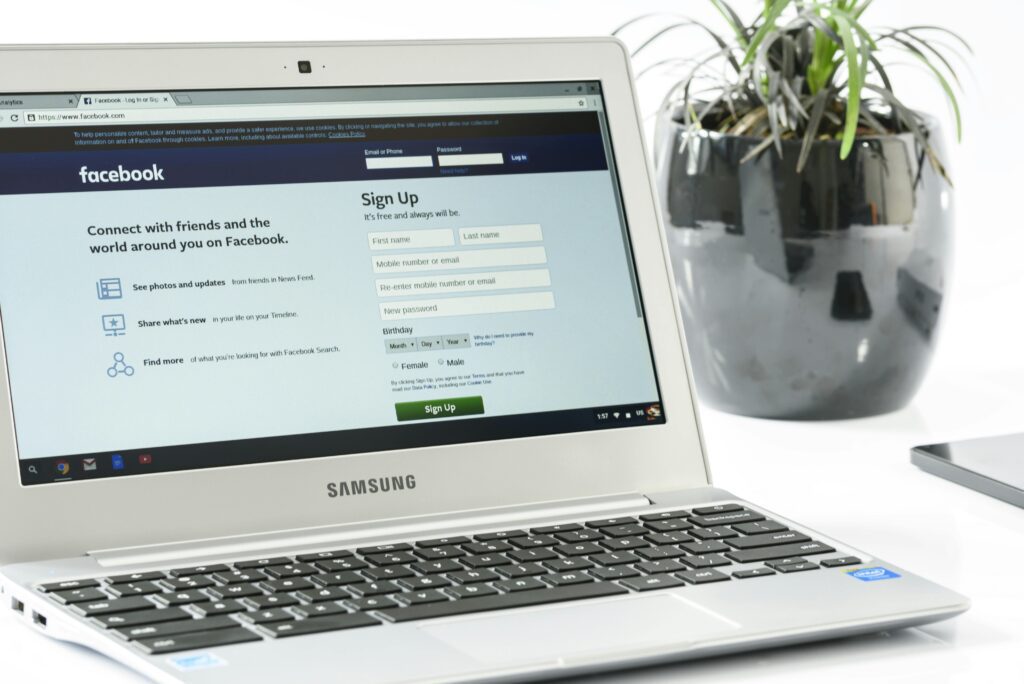Are you still stuck with paper invoices and typing in data by hand? Here’s a fact that will change your mind: 61% of late invoice payments in the U.S. happen because of simple invoice mistakes. But here’s the good news! Smart businesses using invoice automation workflows pay just $1.83 per invoice compared to $6.20 per invoice for companies stuck with manual work. That’s a huge 70% cost cut that goes straight to your profits!
But wait, there’s more! Automation isn’t just about saving money. It changes your whole business. Companies using automation see 80% faster work times and hit 90% automation rates. This means your team can stop doing boring paperwork and focus on growing your business! Plus, the AP automation market is growing to $1.47 billion in 2025. The time to act is now!
In this guide, you’ll learn the top 10 invoice automation workflows that smart businesses use to boost cash flow, cut mistakes, and grow fast. From AI-powered data reading to real-time payment tracking, these workflows will turn your accounts payable from a cost center into a business driver. Get ready to change your money operations!
1. Automated Invoice Capture and Data Reading Workflow
This workflow stops the boring manual entry that eats up your team’s time. Modern OCR technology now hits 98% accuracy rates. This cuts the manual data entry work that hurts old-school invoice processing. It’s like having a smart helper that never sleeps!
The workflow starts when invoices come in through any way—email, mail, or digital upload. AI-powered OCR systems scan and grab key data right away. This includes invoice numbers, dates, amounts, vendor details, and line items. Smart systems can handle different invoice formats. They even learn new vendor layouts through machine learning. Plus, this automated process works 24/7. Invoices get handled right when they arrive instead of sitting in email boxes.
The business impact hits right away. Companies see 60% fewer data entry mistakes and 80% faster processing times. This workflow also stops the common jam where invoices pile up waiting for manual entry. This speeds up your payment cycle and keeps vendors happy. It’s like giving your accounts payable team super powers!
2. Smart Three-Way Matching Automation
Three-way matching means checking purchase orders, invoices, and delivery reports. This used to take hours. Now, automated systems do this key check in seconds. It turns a hard job into a smooth process.
The workflow checks invoice data against your purchase order system and delivery records. AI algorithms spot differences, flag problems, and send only bad invoices to humans for review. Smart systems can handle partial deliveries and complex orders with smart matching logic. The system also keeps detailed records showing how matches were checked. This makes sure everything follows the rules and stays clear.
This automation tackles a big business problem: 39% of invoices have mistakes. But automated three-way matching catches these issues before they become payment problems. Companies using this workflow report 90% straight-through processing rates for matching invoices. This speeds up approval cycles and makes vendor relationships better through faster, more accurate payments. It’s like having a quality control expert working all day!
3. Dynamic Approval Workflow Routing
Manual approval routing creates delays that can hurt your cash flow plans. Automated approval workflows make sure invoices reach the right approvers right away. This is based on pre-set business rules and real-time availability. No more hunting down busy managers!
The system routes invoices smartly based on many factors: invoice amount, department codes, vendor types, and approval levels. AI-powered workflow systems can even predict approval patterns and change routing to avoid jams before they happen. The workflow also has automatic escalation features. If an approver doesn’t respond in time, the system routes to backup approvers or supervisors. Nothing falls through the cracks.
Smart routing gives powerful business benefits. Companies report 50% faster approval cycles and can process invoices in 3.2 days compared to 19.5 days for manual systems. This workflow also stops the common problem of invoices getting stuck with unavailable approvers. Your payment deadlines stay on track and vendor relationships stay strong.
4. Real-Time Payment Authorization and Scheduling
Once invoices get approved, payment authorization and scheduling should be smooth and smart. This workflow automates payment timing to optimize cash flow. It also captures early payment discounts and avoids late fees. It’s like having a money expert working around the clock!
The system looks at payment terms, cash flow forecasts, and discount chances to find the best payment timing. Automated scheduling makes sure payments happen on the best dates. Early enough to capture discounts but late enough to maximize cash flow benefits. The workflow also connects with your banking systems to make payments automatically. This includes ACH, wire transfers, or other methods based on vendor preferences and payment amounts.
The money impact is huge. Companies using automated payment scheduling can capture 90%-100% of early payment opportunities. This saves 1%-2% of invoice values each year. Automation also makes sure payments are never late. This protects your vendor relationships and avoids costly penalty fees. It’s like having a money optimization engine that never takes a break!

5. Automated Vendor Onboarding and Management
Vendor management often becomes a manual mess that slows down your whole buying-to-payment cycle. Automated vendor onboarding creates standard, smooth processes. This helps both your team and your suppliers. It turns a boring process into a smooth experience.
The workflow gives vendors self-service portals. They can submit required documents, banking details, and compliance certificates at their own pace. AI validation checks vendor information against databases and flags fraud risks. The system also keeps up-to-date vendor records, tracks contract terms, and monitors vendor performance automatically. This creates a complete vendor management system.
This automation solves many business problems at once. Supplier self-service portals can cut AP team workload by up to 80%. Automated validation prevents fraud and makes sure everything follows the rules. Smooth vendor onboarding speeds up your ability to work with new suppliers. This makes your buying agility and competitive position better. It’s like having a vendor relationship manager that works 24/7!
6. Exception Handling and Dispute Resolution Workflow
Not every invoice processes smoothly. But automated exception handling makes sure problems get solved quickly and systematically. This workflow finds, categorizes, and routes exceptions to the right team members. It turns potential disasters into manageable tasks.
The system flags invoices with missing information, pricing differences, or validation failures. Machine learning algorithms categorize exceptions by type and urgency. They route them to specialists who can handle specific issues. The workflow also tracks resolution times and keeps detailed logs of all exception-handling activities. This creates a learning system that gets better over time.
Exception automation prevents the common problem where bad invoices disappear into email chains or physical files. Companies typically see 40% fewer invoice exceptions through proactive finding and systematic resolution. Faster exception resolution also makes vendor satisfaction better. It makes sure your payment commitments stay predictable and reliable. This builds trust and stronger business relationships.
7. Multi-Currency and Global Compliance Automation
For businesses operating globally, currency conversions and compliance requirements add complexity. Manual processes struggle to handle this consistently. Automated workflows make sure accuracy while maintaining compliance across multiple regions. This makes global business operations smooth and effortless.
The system handles currency conversions automatically using real-time exchange rates. It applies appropriate tax calculations for different regions. It also makes sure compliance with local e-invoicing mandates. Automated tax form generation (1099s, W-8BEN, W-9) and digital filing reduce compliance workload while minimizing error risks. The workflow also adapts to changing regulatory requirements across different countries and regions. It stays ahead of compliance changes automatically.
Global automation delivers both operational and compliance benefits that protect your business. Companies avoid costly currency conversion mistakes and make sure consistent compliance across all operating regions. Automated compliance also reduces the risk of penalties for non-compliance. These are becoming more common as governments put in place stricter e-invoicing requirements worldwide.
8. Integrated Cash Flow Forecasting and Analytics
Understanding your cash flow position requires real-time visibility into your entire accounts payable pipeline. This workflow combines invoice data with cash flow forecasting tools. It provides strategic money insights that change decision-making.
The system combines data from all invoice processing stages to create comprehensive cash flow forecasts. Predictive analytics identify payment patterns, forecast cash requirements, and highlight opportunities for cash flow optimization. Automated reporting also provides dashboards showing key metrics. These include days payable outstanding, early payment discount capture rates, and vendor payment performance. This creates a command center for money decision-making.
Cash flow integration changes accounts payable from a reactive function into a strategic business driver. Companies gain the ability to make more informed decisions about payments, investments, and borrowing. Real-time cash flow visibility also enables proactive management. This can prevent cash flow crises and optimize working capital use. It gives you the money agility to seize opportunities.
9. Automated Fraud Detection and Security Monitoring
Invoice fraud costs businesses billions each year. But automated detection systems provide smart protection that human reviewers simply cannot match. This workflow continuously monitors for suspicious patterns and potential fraud indicators. It acts like a vigilant security guard that never sleeps.
The system analyzes vendor information, payment patterns, and invoice characteristics to identify potential fraud risks. Machine learning algorithms detect duplicate invoices, suspicious vendor changes, and unusual payment patterns. These may indicate fraudulent activity. The workflow also maintains detailed audit trails and provides real-time alerts when suspicious activities are detected. This enables rapid response to potential threats.
Fraud prevention automation protects both your finances and your reputation. Automated systems can flag high-risk transactions in real time. This prevents fraudulent payments before they occur. Smart fraud detection becomes increasingly important as cybercriminals develop more sophisticated attacks. This protection is absolutely essential for business payment systems.
10. Mobile-First Approval and Monitoring Workflow
Your approval processes shouldn’t stop when approvers leave their desks. Mobile-optimized workflows make sure approvals can happen anywhere, anytime. This maintains process velocity even when team members are traveling or working remotely. It’s like having your office in your pocket!
The workflow provides native mobile apps or responsive web interfaces. These allow approvers to review, approve, or reject invoices from any device. Real-time notifications make sure approvers are immediately aware of pending items. Mobile-optimized interfaces make review and approval quick and intuitive. The system also provides mobile dashboards showing key metrics and process status for managers. This puts powerful analytics at their fingertips.
Mobile accessibility delivers immediate business benefits in our increasingly flexible work environment. Companies report significantly faster approval times when approvers can act immediately. They don’t have to wait to return to their offices. Mobile capabilities also make sure your invoice processing continues smoothly regardless of travel schedules, remote work arrangements, or unexpected disruptions. This keeps your business running at full speed.
Conclusion
The ten invoice automation workflows outlined above represent the cutting-edge of accounts payable optimization in 2025. From AI-powered OCR achieving 98% accuracy rates to mobile-first approvals enabling real-time processing, these workflows address every aspect of the invoice-to-payment cycle. The combined impact of putting these workflows in place is absolutely transformative. Companies typically see 60-80% cost reductions, processing time improvements of 80%, and error rate reductions approaching 95%.
Your next step is to assess your current processes and identify which workflows would deliver the greatest immediate impact for your business. Start with automated data capture if manual entry is consuming significant time. Or prioritize approval workflow automation if delays are affecting your vendor relationships. Consider partnering with experienced automation providers who can guide your implementation and make sure maximum ROI. This turns your investment into a spectacular success story.
Looking ahead, the invoice automation landscape will continue evolving. Blockchain integration, advanced AI capabilities, and predictive analytics are becoming standard features. The businesses that put these workflows in place now will be positioned to take advantage of future innovations. Their competitors will struggle with outdated manual processes. Don’t let your business get left behind. Embrace the automation revolution and watch your cash flow soar to new heights!
How much can my business realistically save with invoice automation?
The cost savings from invoice automation are substantial and well-documented. This makes it one of the best investments you can make for your business. Companies typically reduce invoice processing costs by 60-80%. Manual processing costs $6.20 per invoice compared to $1.83 per invoice for automated systems. For a business processing 1,000 invoices monthly, this translates to annual savings of approximately $52,440. Automation also delivers indirect savings through faster processing, reduced errors, and improved early payment discount capture. This can add 1%-2% additional savings on invoice values. The exact savings depend on your current processing costs and invoice volume. But most businesses see ROI within 6 months of implementation.
What are the biggest implementation challenges and how can I prepare for them?
The primary implementation challenges include system integration complexity, employee training requirements, and initial setup costs. However, these challenges are manageable with proper planning and a positive attitude. Modern automation solutions offer pre-built integrations with popular ERP and accounting systems. This reduces integration complexity significantly. For training, focus on demonstrating how automation reduces tedious work rather than replacing jobs. This helps with adoption and builds enthusiasm. Consider starting with a pilot program on a subset of invoices to build confidence and identify optimization opportunities before full rollout. Many vendors also provide implementation support and training resources to make sure successful deployment. This makes the transition smoother than you might expect.
How quickly will I see ROI from invoice automation implementation?
Most businesses see measurable returns within 3-6 months of implementation. Some report immediate benefits from reduced processing times and error rates. The payback period averages 6 months for comprehensive automation solutions. This makes it an incredibly attractive investment. Companies often see immediate improvements in processing speed and accuracy. Cost savings follow as manual labor requirements decrease. The fastest ROI typically comes from time savings and error reduction. Strategic benefits like improved cash flow management and early payment discount capture build over time. Businesses processing higher invoice volumes see faster ROI due to greater cost savings potential. This makes automation an even more compelling choice for growing companies.
read more
Boost Revenue Now: Essential Advertising KPIs Every CEO Uses
Advertising Automation KPIs Every Marketer Should Track Picture this: companies are crushing it with $5.44 back…
10 Game-Changing Facebook Ads Workflows for 2025 Growth
Picture this: 76% of businesses using Facebook ads workflows slash their campaign management time by 30%….
10 Deadly Retargeting Mistakes Business Owners Make
Did you know that retargeting campaigns can boost conversion rates by up to 150%? Yet many…
10 Invoice Automation Workflows That Skyrocket Cash Flow Now
Are you still stuck with paper invoices and typing in data by hand? Here’s a…
Revolutionary: 10 Social Media Automation Strategies Crushing Competition
Imagine this: you’re staring at your calendar, heart racing as you realize your biggest event…
10 Hidden Price drop Automation Secrets Competitors Don’t Know
Did you know that 77% of businesses using marketing automation see increased conversion rates, while…






